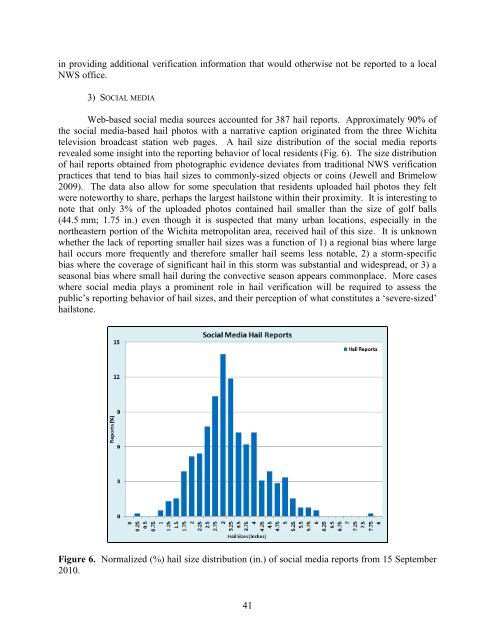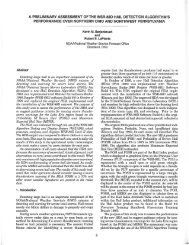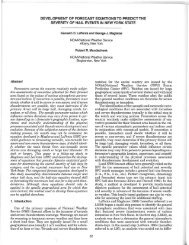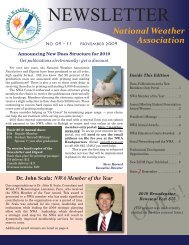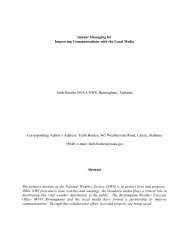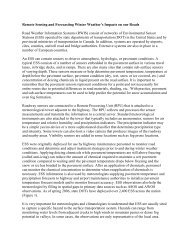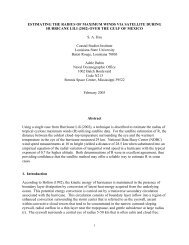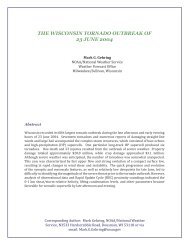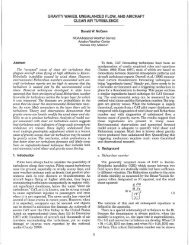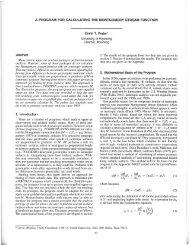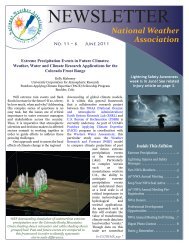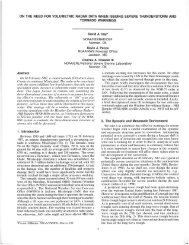Creating high-resolution hail datasets using social media and post ...
Creating high-resolution hail datasets using social media and post ...
Creating high-resolution hail datasets using social media and post ...
Create successful ePaper yourself
Turn your PDF publications into a flip-book with our unique Google optimized e-Paper software.
in providing additional verification information that would otherwise not be reported to a local<br />
NWS office.<br />
3) SOCIAL MEDIA<br />
Web-based <strong>social</strong> <strong>media</strong> sources accounted for 387 <strong>hail</strong> reports. Approximately 90% of<br />
the <strong>social</strong> <strong>media</strong>-based <strong>hail</strong> photos with a narrative caption originated from the three Wichita<br />
television broadcast station web pages. A <strong>hail</strong> size distribution of the <strong>social</strong> <strong>media</strong> reports<br />
revealed some insight into the reporting behavior of local residents (Fig. 6). The size distribution<br />
of <strong>hail</strong> reports obtained from photographic evidence deviates from traditional NWS verification<br />
practices that tend to bias <strong>hail</strong> sizes to commonly-sized objects or coins (Jewell <strong>and</strong> Brimelow<br />
2009). The data also allow for some speculation that residents uploaded <strong>hail</strong> photos they felt<br />
were noteworthy to share, perhaps the largest <strong>hail</strong>stone within their proximity. It is interesting to<br />
note that only 3% of the uploaded photos contained <strong>hail</strong> smaller than the size of golf balls<br />
(44.5 mm; 1.75 in.) even though it is suspected that many urban locations, especially in the<br />
northeastern portion of the Wichita metropolitan area, received <strong>hail</strong> of this size. It is unknown<br />
whether the lack of reporting smaller <strong>hail</strong> sizes was a function of 1) a regional bias where large<br />
<strong>hail</strong> occurs more frequently <strong>and</strong> therefore smaller <strong>hail</strong> seems less notable, 2) a storm-specific<br />
bias where the coverage of significant <strong>hail</strong> in this storm was substantial <strong>and</strong> widespread, or 3) a<br />
seasonal bias where small <strong>hail</strong> during the convective season appears commonplace. More cases<br />
where <strong>social</strong> <strong>media</strong> plays a prominent role in <strong>hail</strong> verification will be required to assess the<br />
public’s reporting behavior of <strong>hail</strong> sizes, <strong>and</strong> their perception of what constitutes a ‘severe-sized’<br />
<strong>hail</strong>stone.<br />
Figure 6. Normalized (%) <strong>hail</strong> size distribution (in.) of <strong>social</strong> <strong>media</strong> reports from 15 September<br />
2010.<br />
41


